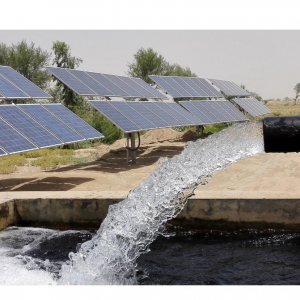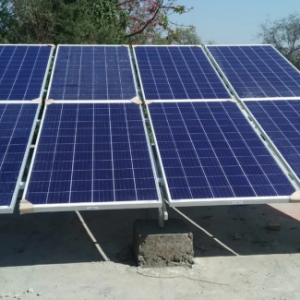Introduction:
Harnessing solar energy through rooftop solar systems has become an increasingly popular and environmentally conscious choice for homeowners and businesses alike. This step-by-step guide will walk you through the comprehensive process of installing a solar rooftop system, highlighting key considerations at each stage to ensure a successful and efficient transition to solar power.
Assessment and Planning
The journey towards solar energy begins with a detailed assessment of the site's solar potential. A qualified solar installer conducts a thorough examination, considering factors such as roof orientation, shading, and local climate conditions. Specialized tools, like solar pathfinders, may be used to analyze sunlight exposure accurately. Based on this assessment, a tailored solar plan is crafted, specifying the optimal system size, panel placement, and overall configuration.
The planning phase is also crucial for determining the financial aspects, including return on investment and potential energy savings. Homeowners may choose between on-grid and off-grid systems, depending on their energy needs and geographical location.
Permitting and Paperwork
Obtaining the necessary permits and approvals is a critical step in the solar installation process. The solar installer takes charge of this paperwork, which includes applying for permits and securing utility interconnection agreements. Compliance with local building codes and regulations is essential to ensure a safe and legal installation.
The permitting process may vary depending on location, and it's vital to work closely with local authorities to ensure all requirements are met. This phase may also involve discussions with the utility company to finalize details related to grid interconnection.
Material Procurement
With permits secured, the next step involves procuring the materials required for the solar installation. High-quality components, including solar panels, inverters, mounting hardware, and electrical wiring, are sourced from reputable suppliers. Ensuring the durability and efficiency of these components is paramount for the long-term success of the solar system.
The procurement process also includes considerations for warranties and guarantees provided by the manufacturers, adding an extra layer of assurance for the system owner.
Roof Preparation
Before solar panels can be installed, the roof must undergo a thorough inspection and preparation. Any existing damage is addressed, and the roof's structural integrity is verified to ensure it can support the additional weight of the solar panels. The type of roof (shingle, tile, metal) determines the specific mounting hardware required for a secure and weather-resistant installation.
Roof preparation may also involve considerations for future maintenance access and potential shading issues caused by nearby structures or vegetation.
Installation of Mounting Structure
The mounting structure serves as the foundation for the solar panels and plays a crucial role in the system's overall stability. During this phase, installers secure mounting rails or brackets to the roof, ensuring a level and secure base for the solar panels. Precision is key to accommodating the weight of the panels and withstanding environmental factors such as wind and snow loads.
Proper attachment to the roof is essential for ensuring the safety of the system during adverse weather conditions. Attention to detail in this phase contributes to the overall durability of the solar installation.
Electrical Wiring and Inverter Installation
Once the mounting structure is in place, the focus shifts to the electrical components of the solar system. Electrical wiring is routed from the solar panels to the inverter, a critical component that converts the direct current (DC) produced by the panels into alternating current (AC) suitable for home or grid use. The proper installation and sizing of the inverter are essential for optimal energy production.
Installers carefully connect the wiring, ensuring a secure and weatherproof installation. The inverter is typically installed in a location easily accessible for future maintenance.
Solar Panel Installation
With the mounting structure and electrical components in place, it's time to install the solar panels. Precision and attention to detail are crucial during this phase to maximize sunlight exposure and, consequently, energy production. Installers follow the layout specified in the solar plan, considering factors such as spacing and tilt angle for optimal performance.
Solar panels are securely attached to the mounting structure, and electrical connections between panels are made to complete the circuit. This phase requires coordination and precision to ensure the panels are aligned correctly and securely fastened.
System Testing and Commissioning
Following the physical installation, the entire solar system undergoes a comprehensive testing process. This includes checking all electrical connections, verifying panel output, and confirming communication with the inverter. System performance is closely monitored to ensure it meets or exceeds the expected energy production outlined in the solar plan.
Once satisfied with the performance, the system is commissioned, marking its official readiness to generate clean and renewable energy. During commissioning, the installer may also provide an overview of the system's operation and maintenance requirements to the system owner.
Monitoring and Maintenance
A solar monitoring system is often integrated to track energy production and overall system performance. This allows homeowners or system operators to monitor the system's efficiency and detect any issues promptly. Regular maintenance is essential to maximize the system's lifespan and efficiency, including cleaning panels, checking electrical connections, and ensuring the overall integrity of the system.
Monitoring also provides valuable data for assessing the system's return on investment and can aid in identifying opportunities for further energy savings or system expansions.
Conclusion:
In conclusion, the installation of a solar rooftop system is a multifaceted process that involves careful planning, skilled labor, and adherence to safety and regulatory standards. By following this comprehensive step-by-step guide, homeowners and businesses can confidently embrace solar energy, reducing their environmental impact and enjoying the long-term benefits of clean and sustainable power. The transition to solar power not only contributes to a greener future but also offers financial savings and energy independence for those seeking a renewable and eco-friendly energy solution.






